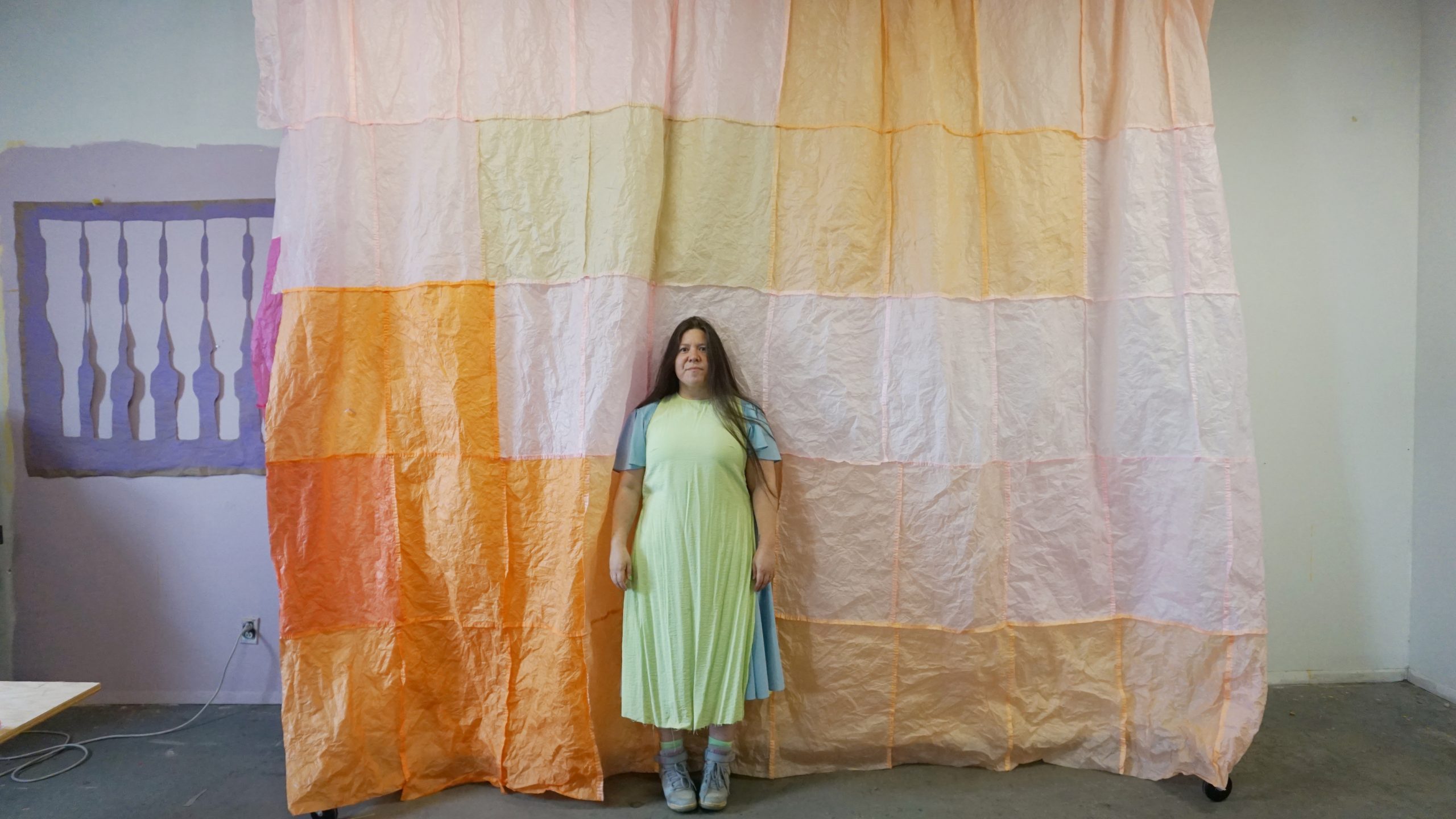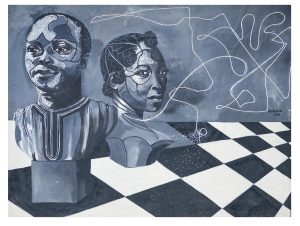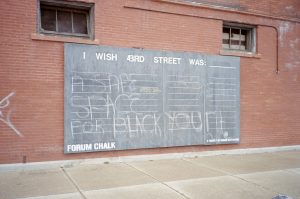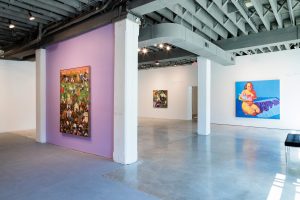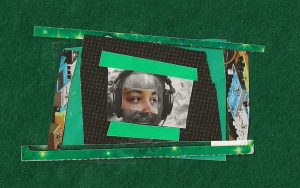Studio visits — crucial to arts writing, as well as artistic and curatorial practices — have a connotation of being the place where artists are “discovered.” The word “discovery” immediately feels colonial and brings to mind an inherent power dynamic and a transactional view of studio visits. This type of mindset is harmful to the artist and is contradictory to an ethical approach. As I prepare for studio visits, I begin by researching artists to establish familiarity. If studio visits are in person, I set up a Zoom call to introduce who I am (with receipts of my bio or LinkedIn), what I do, and set community guidelines for intentions. I take pressure off studio visits by allowing artists to gauge their comfort before sharing physical space. When one goes into an artist’s studio, one must remember that it is first and foremost the artist’s space — not the visitor’s — and the artist’s work and intentions have value and should come first before the visitors’ ideas of what the artist’s work is/should be.
Channeling multi-sided conversations, I sought out artist Natalia Villanueva Linares’s perspective. She is a Chicago-based, French-Peruvian artist whose work is rooted in performance, installation, interventions, and other participatory practices. She is also the founder of Ukayzine, a nomadic art magazine, and a contributor to Sixty as a translator and co-organizer of the cultural criticism program CANJE. Her interdisciplinary practice prompts a deeper connection to space and community. How can a space welcome all and be nourishing? This is a grounding question in her practice. We discuss our own experience in studio visits, each coming from different sides of the same coin (visitor and artist).
This interview has been edited for clarity.
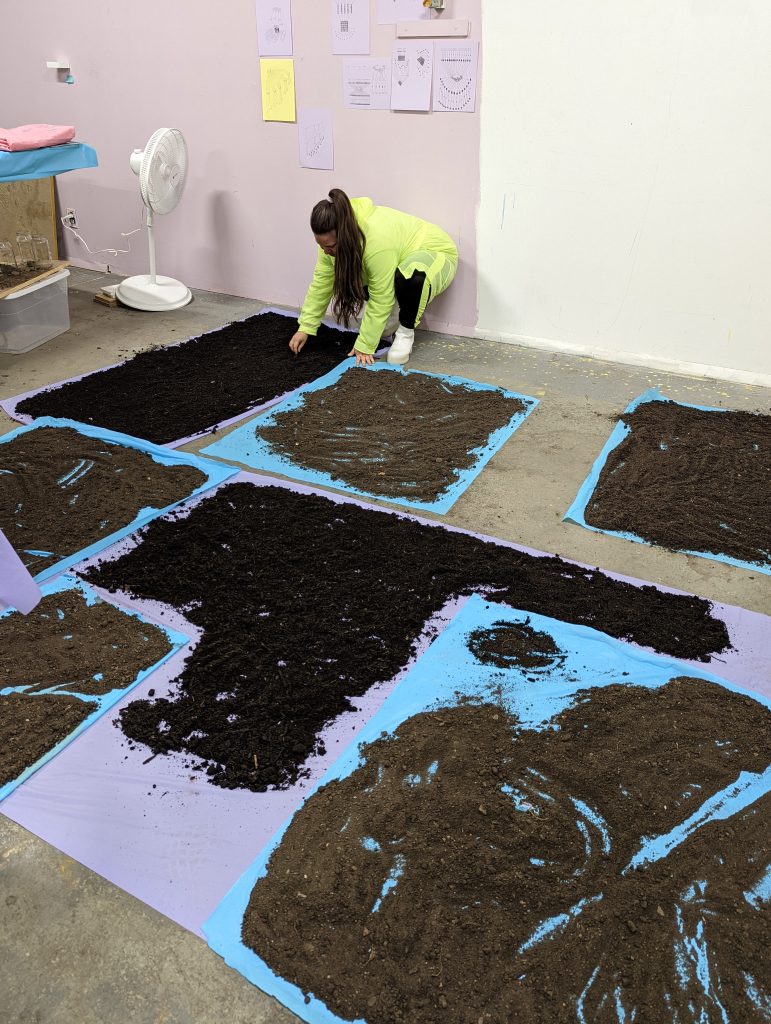
NVL: I offer my studio to people in the same spirit I offer my completed works; it is an opportunity to exchange and have others respond in a way that can move me and us together. It is important to feel safe as well and make others feel welcome. I learned in American culture, since I arrived to Chicago and with Sixty Inches From Center, that it is a minimum for cultural workers to feel secure and safe. There is a balance in creating space for whoever comes in. So, I’m letting a person come into my studio, but talking about my work in my studio is incredibly vulnerable. My studio is the center of my everything. I am a very productive person. This is why I work on many pieces at the same time, and it can be overwhelming for a visitor to be introduced to every project due to the size, complexity, and temporality involved in every project. Visitors are full of their own experiences, it is important to be mindful of the amount we share with them. You need to create a balance.
CB: What are examples of studio visits that stand out?
NVL: I had a space for two years, and I invited around 10 people in those two years because of COVID. In my studio, my art space can be put aside and become a place for people to gather. I worked with Sixty on [our project] CANJE there.
A great visit is a perfect encounter when a person is ready to receive as much as you give. I can tell when a person is feeling like a glass that you’re filling too much and you must turn it down. It’s not a great studio visit when the person looks like they are full of their thoughts and they are trying to connect your work with something else. They’re not receiving what they’re being given or the moment we’re exchanging. They’re not there. They’re thinking: “How can I relate to you?” And that thought sometimes takes too much space and it becomes more about that. A person is a gift in your space. What I want to share with that person becomes something that can complement your life.
CB: Once on a studio visit with an African American image-maker working in textiles, he told me something disturbing. Before I came into his space, white curators conducted many studio visits with him because of his work gaining mainstream popularity and influencing Black communities across America since 1970. One curator that came analyzed a Cameroonian mask that appeared in his work. She mentioned that it represented a shift or departure in his practice. That offended him. He has always explored, grappled, and reckoned with masking traditions and African iconography.
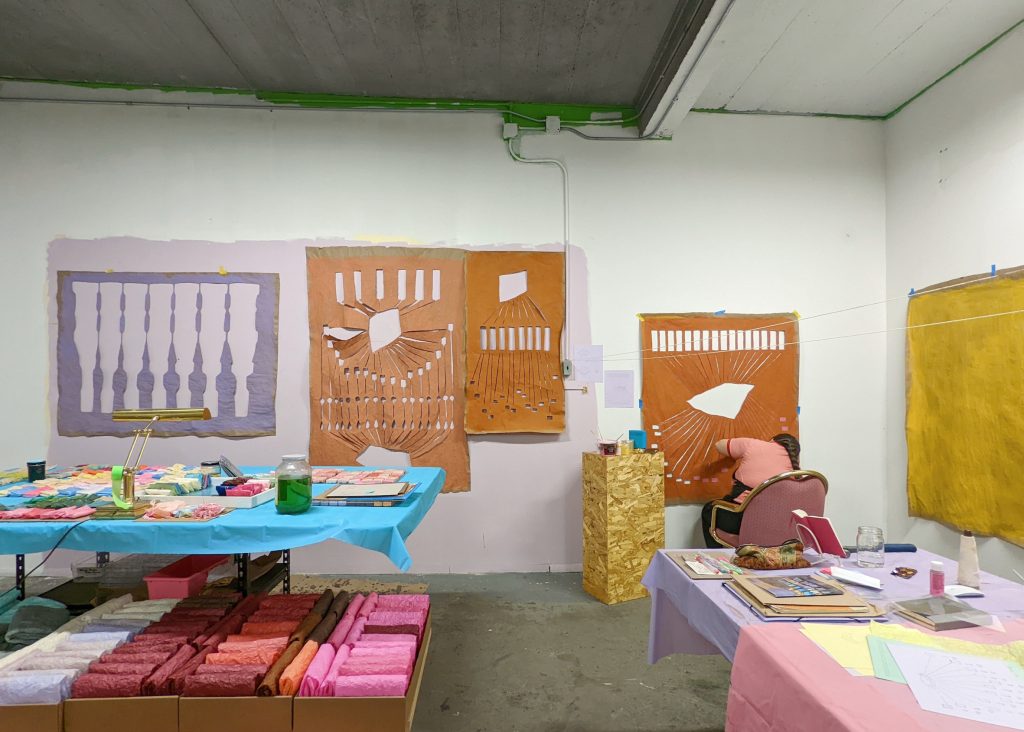
NVL: Do you feel it should have been a question? Because what you said sounded more like a person saying that “it was a turning point,” instead of “was it a turning point?” Curiosity is important.
Since artists are busy, there must be a reason for us to meet you, or we have nothing to exchange or nourish each other. In my case, [if there is no reciprocity in the conversation or I overwhelm them with facts], sometimes that’s too much syrup for that person. While I appreciate it when a person takes time to critique, it becomes problematic when a person critiques but has no idea how. That has happened to me several times. If you feel that what you are about to say is not a thought process you should be diving into, don’t do it. And, well, maybe let’s talk about another artwork.
CB: What is your ideal studio visit?
NVL: When relationships click and the person has a sense of curiosity. It’s exciting when people don’t know anything about art and can be surprised. They ask you questions that no one could have ever asked.
Nourishment is when it feels like you’re sharing something, when a person is taking it all in and they want to know more. An ideal studio visit makes room to receive — and be sure that you have room because if you don’t, you should reschedule. If I don’t have certain tools in my pocket, there are certain things I won’t be able to do. Be curious about another person no matter what. Everyone has something exciting to learn/teach.
An ideal studio visit is knowing that we will see each other again. Be a person who introduces your work to other people. A person should keep growing their presence in a cultural space. Curators could consider sending other people to see these artists to keep up with them, because artists [need to] work with curators. Exchange [means] we did it together, and we kept growing together. When that person in my life [curates] a show, I send everybody to go to see their show because I know they are passionate about what they do, and they appreciate and care for the artists they work with.
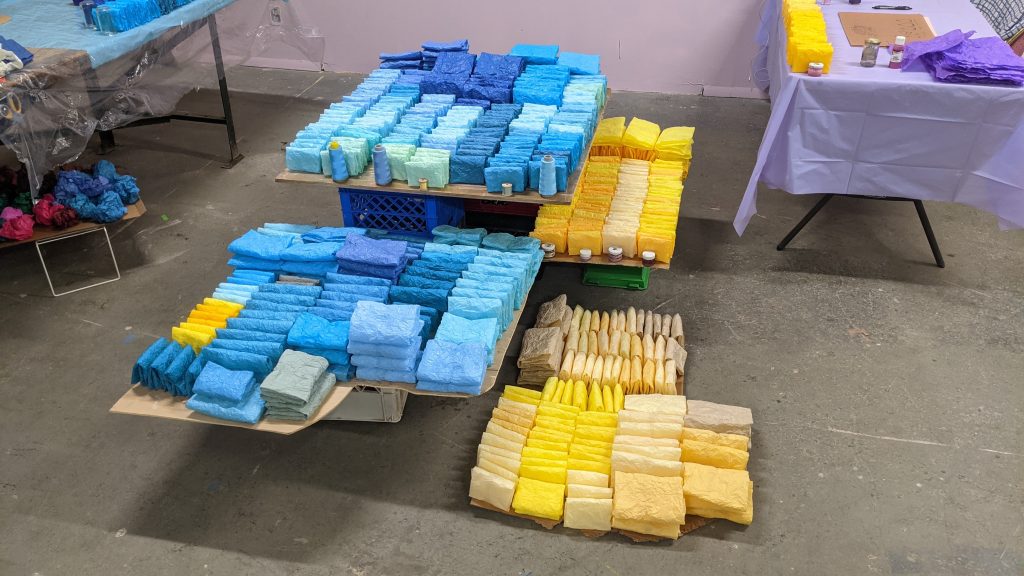
CB: You mentioned going on studio visits as well. Do you want to share your approach?
NVL: [Conducting a studio visit myself is] fantastic because I try to put myself in a mindset of, “What would it be to know nothing about art?” I empty all my pockets when I knock on a door. If someone invites me, I must tell them that I am not going to be nice if I must share something. I’m going to be honest. I’m kind and sweet outside of my work, but when it’s related, I like being challenged, so I offer that to another person if the moment is appropriate. I listen to a person to see what their relationship to certain materials is [and see] if I have a high familiarity with them. I try never to talk about my own experiences, I only focus on what they’re telling me [so that I can] understand their relationship to what they’re doing with materials [in order] to [tell] their story, where they’re going, and where they are.
CB: What are the formats of your studio visits?
NVL: It depends on who’s coming and what I want to do. When choosing work to share with a visitor, I discover something and a person can feel my excitement for work. I don’t have specific formatting or time frameworks. [It’s] more about creating a path that organizes space. Sometimes [my space] changes if one person is coming and another person is coming the next day — maybe space would change depending on how [the previous studio visit] went. If, on Monday, it was presented [in a certain] way, how did it go? Was there more freedom when I was speaking between particular artworks than others? What would happen if I switched [the order], what sounds more coherent?
CB: I have an organic way of doing studio visits and it depends on the person. Some people have a formula: sticking to an hour. I’m someone who can get lost in studio visits if the artist allows it, so it depends on them and their comfort. When I have studio visits with elders, I make sure to clear my schedule and give them lots of time to show respect. I see them all as unique, extraordinary experiences. None of them are identical and I don’t expect them to be.
NVL: I always have cookies and bubble water [for my guests] because when you arrive at a studio space, you feel that a person’s waiting for you — like you [are] expected to be there. You can create a timeframe, but then [you may be looking at] your watch when you’re there, and [the artist] can feel that. Sometimes it can last all day. When I do studio visits, it’s important sometimes to not say [I have to go] because I have something else to do. I [should be] leaving because the amount of time we spent together was excellent and now I can go.
CB: It reminds me of having a great meal, but it does have an end at some point. It’s like, I’m full. It was wonderful, thank you so much. You must stop at some point. It’s like taking in too much information and now you are being overfilled. Yeah, boundaries are hard to have and communicate. Do you have any thoughts on studio visits, discovery, and power dynamics? Framing the studio visit as a way to find talent feels like a means to an end instead of care.
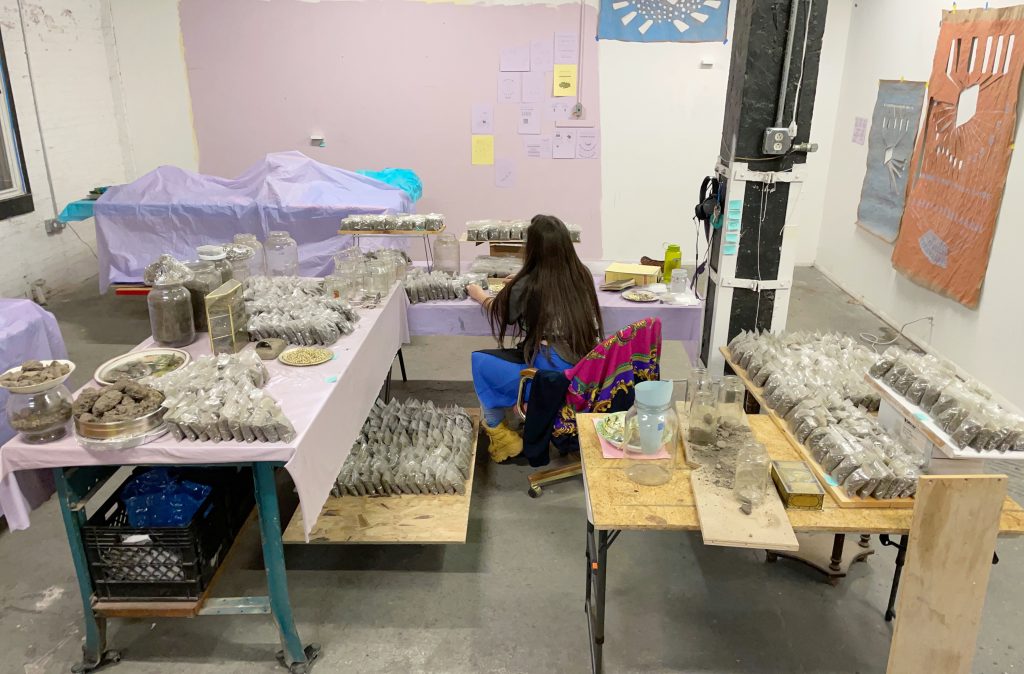
NVL: As I said, I’m new to Chicago, but I make work in other countries [France and Peru], and when I’m there they asked me: are you an emerging artist or a mid-career artist? That depends. I’ve practiced for as long as a mid-career person. You must calculate it, but I just arrived here, which makes me an emerging artist.
When I lived in a smaller part of Illinois, I didn’t think about [the power dynamics]. It happens to me more in other countries than it happens to me [in Illinois] because I didn’t live in a space where these conversations happened. I created conversations in that city. I haven’t experienced it in Chicago, but in general, there’s weight, expectation, and opening doors for conversation. Some conversations being done during studio visits should just be done at a coffee shop later. [Every conversation is] not [always] something to share in a space that is so personal and intimate for an artist. I prefer talking about collaborations outside of studio spaces, when you have something clear in hand [and with the approach that] you didn’t “discover” something that has 10 years of existence — in my case, more than 10.
CB: Instead of saying “I found,” or “I discovered,” like you said, [you could shift to] “I met” or “I witnessed.” On a linguistic level, how can people shift?
NVL: “I was introduced,” “I felt,” or “that touched me” feels better. A curator once introduced my work to another person as: “this artist’s work has made me cry a few times.” It was more about sharing their feelings [instead of] telling. [I] create that relationship with every studio visit I have. If that type of relationship doesn’t come out, I’m not interested. What relationship do you want to create? How long are we willing to stick with the feeling for a person? Do I like [the artwork] because it fits my projects? How does a long-term relationship look?
CB: Does a studio visit begin a relationship or is it in the middle? Some curators have relationships with an artist for several years before entering a studio, and others have no relationship. A step in a studio could blossom a relationship or end one. I am close friends with most people I have studio visits with or collaborate with them in some capacity. I learn about them through social media, a meeting at an opening, a colleague telling me about their work, or seeing their work in an exhibition prompts me to reach out. Since I am a writer and curator, I prefer to work with people as a writer because those relationships are fluid and there’s always potential for curating, but once you’ve exhausted that possibility, relationships change.
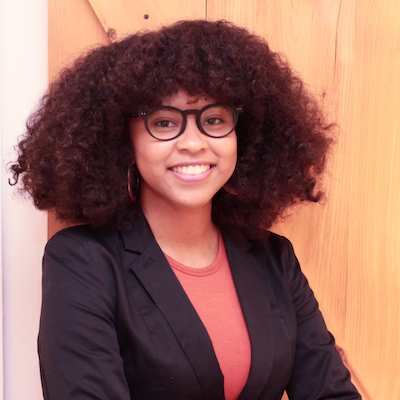
About the author: Chenoa Baker (she/her) is an empathetic curator, wordsmith, and descendant of self-emancipators. Equity and collectivism are the core tenants of her curatorial work. She empowers a range of clientele — individuals, firms, and institutions — to elevate their social impact, publication, and exhibition projects. She is the current Associate Curator at Beacon Gallery. Her independent work includes a wide repertoire of shows: Gio Swaby: Fresh Up at the Peabody Essex Museum; Simone Leigh at ICA/Boston and Simone Leigh: Sovereignty at the 59th La Biennale di Venezia; and Touching Roots: Black Ancestral Legacies in the Americas at MFA/Boston. Her autobiographical-style art criticism appears in Boston Art Review, Helena Metaferia: Generations, Art For This Moment, Burnaway, Art & Object, Black Art in America, and Sugarcane Magazine.
